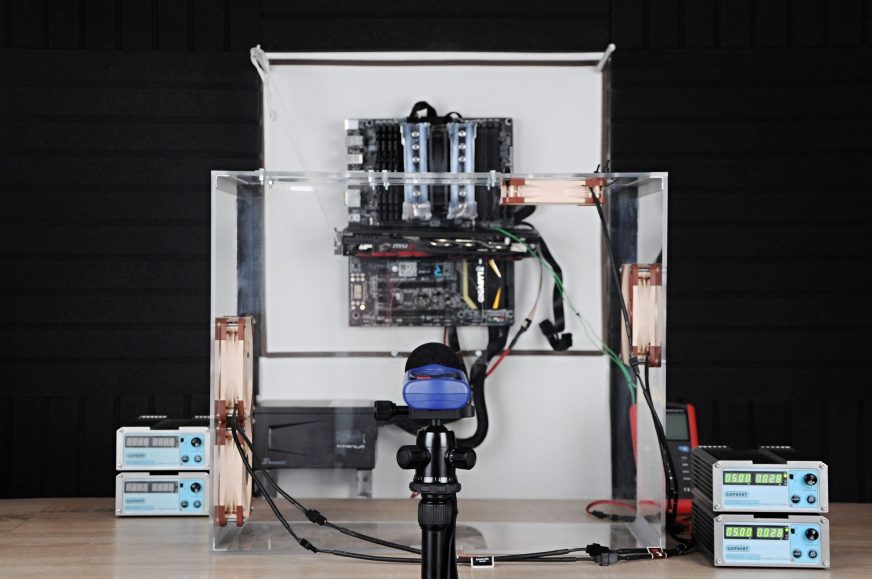Tips resulting from tests
Do you know how many fans do you need and what speed they should run at to achieve the optimal cooling of your PC case? Is it better to induce positive pressure, negative pressure, or balanced airflow? Are four fans with less RPM more effective than two with more RPM? We can answer all these questions by providing you results of more than 70 tests which also include the monitoring of the heating of power supply circuit of CPU and GPU.
Tips resulting from tests
More fans adjusted to the same level of noise have proven to be more effective, there was no doubt about that. Let’s take a look at the results in the processor section first.
Four (2 + 2) against two (1 + 1) fans can mean the difference of up to 12 °C when cooling more powerful processors. Even at the lowest noise level, the results of four fans, in the vast majority of cases, are better than the more noisy modes with less fans. If only two fans are available, it is more reasonable to install them both for the outtake. With one at the front and the other at the rear, the results are significantly worse. Even worse than with only one fan for the outtake which can run at the same noise level with 60 rpm more.
Interesting are the results with three fans, where it bounces between positive and negative pressure. While at higher noise levels, the negative pressure seems like a better choice for optimal cooling of the processor part, but odds change with lower flow. At 31.5 dBA (~ 495 rpm), we noticed the difference of 3 °C in the favour of the positive pressure. On the other hand, if you want to concentrate on the graphics part, negative pressure is better. That said, there is no “best” configuration, just an optimal configuration for particular areas.
If you own a dedicated graphics card, the previously winning 2 + 2 configuration appears to be a bit worse choice than 1 + 2. This does not apply to the case of 36 dBA mode where a stronger forward pressure positively affects things. Otherwise the negative pressure is always more efficient. This claim can be confirmed also by the comparison of the 0 + 2 and 1 + 1 configurations. It might seem that the balanced flow will be more suitable, but it is not. Although the front fan blows on the circuit, more intense negative pressure is more effective, again. However, the differences are really small, only up to 2 °C. Therefore, if you have a more perforated case that easily gets dusty, you can induce the positive pressure too. But be careful about the CPU section.
The worst results were achieved with a lone fan, and the fact that it ran with the highest rpm in the tests changes nothing. However, it is still an extremely important part of any desktop PC and even at the lowest noise level, at 31.5 dBA, it performed its necessary role. After its removal, it was no longer possible to properly cool the 320 W configuration. The heat was rapidly accumulated in the closed case, and after 10 minutes the temperatures of the components reached critical levels and the processor started to throttle. So, even one low-speed fan is very important and it is usually enough for most office configurations.
TL; DR: For more powerful computers, four fans with balanced flow are the most effective solution and you do not have to worry about decreasing the rpm to the minimum. Three fans creating negative pressure will do almost just as fine. In modern PC configurations without a dedicated graphics card and without any HDDs, the front fans do not play an important role and they help the system cooling only cosmetically. So, two fans for the outtake are enough.
If you would like to give us a tip for a review, feel free to do so in the comment section.
We will be grateful for any feedback!
- Contents
- Introductions and test procedures
- Cooling the CPU and the power supply circuit
- Cooling the GPU and the power supply circuit
- Tips resulting from tests









